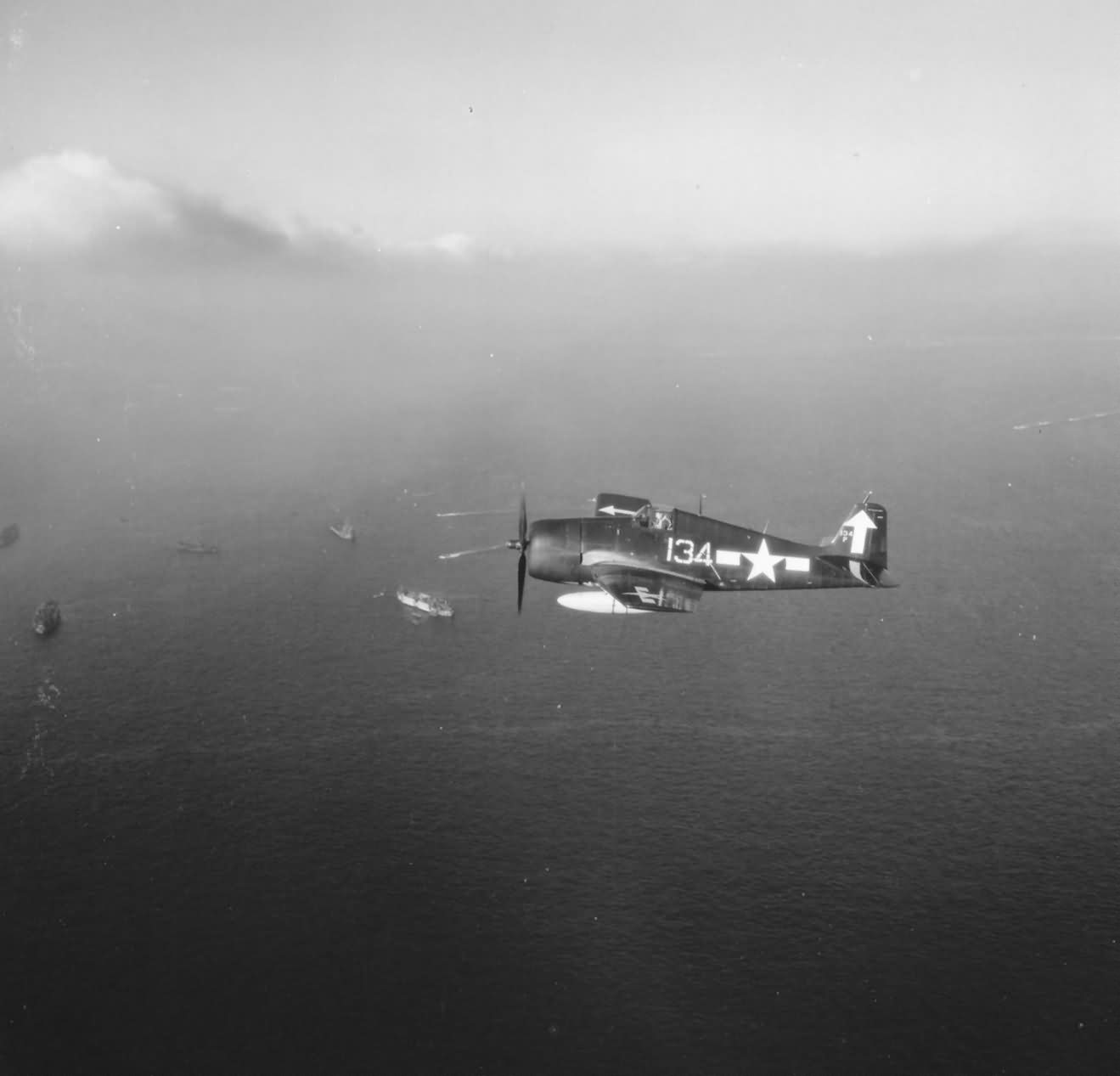The Battle of Okinawa, part of Operation Iceberg, was a pivotal and intense military campaign during the Pacific War, lasting from April to June 1945. It involved the largest amphibious landings of the Pacific theater, with over 180,000 Allied troops participating. The Hellcats of Task Force 58 (TF 58) played a crucial role in providing combat air patrols and anti-kamikaze operations, while close air support came primarily from Navy Hellcats and Marine Corps Corsairs operating from escort carriers (CVEs) of Task Force 52 (TF 52).
Kamikaze attacks reached their peak during the Okinawa campaign, inflicting considerable damage on Allied forces despite the fighter screens and defensive measures in place. Several carriers, including the Wasp, Franklin, and Enterprise, suffered direct hits during the early phases of the battle in March. For instance, the Franklin experienced catastrophic damage on March 19 when kamikazes struck while aircraft were fuelled and armed on deck. Other carriers, such as the Intrepid, Yorktown, and Hancock, were also targeted and damaged by kamikaze pilots during the campaign.
The introduction of the Yokosuka MXY-7 Ohka (“Baka” or “foolish” in Allied slang), a rocket-powered kamikaze glider bomb, further escalated the threat. These were carried by G4M Betty bombers and released near Allied ships, with Hellcats intercepting and destroying the mother planes before they could release the Ohkas. Despite the high intensity of kamikaze assaults, TF 58’s Hellcats succeeded in limiting the damage.
On April 1, 1945, the US Army and Marine Corps launched their assault on Okinawa’s western shores. Light opposition allowed the quick capture of Yontan airfield, while Hellcats and Corsairs maintained air superiority over the battlefield. Kamikaze attacks on April 6 involved over 400 aircraft in a coordinated wave, with Hellcats and Corsairs working to intercept these threats. Nevertheless, several destroyers and other vessels were severely damaged or sunk.
The British Pacific Fleet (TF 57), operating alongside TF 58, played a crucial role in neutralizing Japanese airfields on the Sakishima Islands and Formosa. British carriers, such as the HMS Formidable, Victorious, Indomitable, and Illustrious, withstood repeated kamikaze assaults but remained operational throughout the campaign.
One of the most significant naval engagements during the Okinawa battle was the sinking of the Yamato, Japan’s largest battleship. On April 7, Allied aircraft from TF 58, including Helldivers, Avengers, Hellcats, and Corsairs, attacked the Yamato as part of Operation Ten-Go, sinking the battleship and marking the end of Japan’s major naval capabilities.
Throughout the Okinawa campaign, the Allies faced relentless kamikaze attacks but maintained air and naval superiority. The battle concluded on June 21, 1945, with the island secured after a brutal ground campaign. Carrier-based aircraft had flown over 40,000 combat sorties, shot down 2,516 Japanese aircraft, and supported the amphibious assault with devastating air strikes. Although the kamikaze attacks caused significant losses, the Allies emerged victorious, bringing them one step closer to Japan’s defeat.
